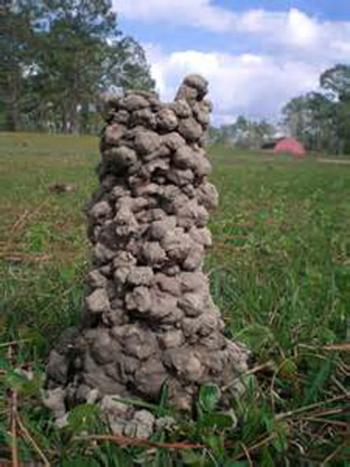
A crawfish mound in a yard.
Learning how to control crawfish in your lawn
BATON ROUGE, La. – It’s not every day that Louisiana residents are looking for ways to get rid of crawfish in the lawn. But it does happen, and there are effective ways to get the job done.
LSU AgCenter and Sea Grant specialist Greg Lutz said no pesticides are labeled for crawfish control, but some home remedies are effective.
“There are a few things you don’t want to do when trying to control crawfish,” Lutz said. “One thing you don’t want to do is put pesticides down into burrows because that can potentially contaminate groundwater.”
Lutz said more than 300 crayfish species are found in North America, and it is important to understand which you are dealing with in your lawn.
“It is possible that the species in question is considered of concern, threatened or even endangered,” he said.
In fact, the Louisiana Department of Wildlife and Fisheries lists “imperiled” or “critically imperiled” crawfish populations in 23 Louisiana parishes.
Lutz explained another factor to consider is some of the crawfish in yards maybe remnant populations from where bottomlands were cleared to prepare the site for homes.
In Louisiana, crawfish are normally associated with bodies of water, whether it’s ponds or the Atchafalaya Basin.
But some species of crawfish spend their entire lives away from permanent water, Lutz said.
“In the early spring they leave their burrows for a few hours after heavy rainfalls and mate,” Lutz said. “Then a few weeks later, the females lay their eggs, and the next heavy rain they will emerge again and turn their babies loose in large puddles and ditches.”
More inquiries about crawfish burrows in lawns occur this time of year because they have just finished their spawning season and are back in the ground cleaning out and enlarging their burrows – or making their very first burrows, Lutz said.Lutz said there are a few considerations when looking for ways to rid your yard of the “mudbugs.”
“Using pesticides in burrows is not only a bad idea, it’s also illegal. And putting bleach down in the burrow is often ineffective,” Lutz said. “The one thing that seems to work is lye.”
Lutz said about one tablespoon full usually does the job. And as it migrates through the surrounding soil, lye turns into harmless by-products.
- Log in to post comments
